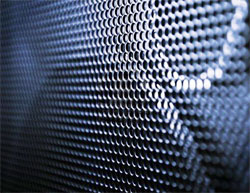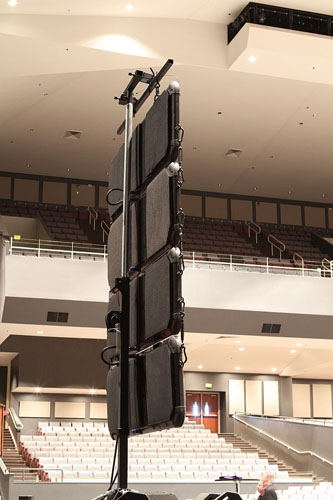
With Flashline, Turbosound presents a true 4-way line array module, incorporating 11 custom-designed transducers.
Both compression drivers and mid-high transducers feed optimized waveguides, with low-mids boosted by dedicated transducers and dual horn-loaded woofers utilizing both front and rear cone radiation to bolster efficiency.
Drivers can be accessed either from the front (the entire mid/high section is removeable) or from the rear via access doors, greatly simplifying maintenance.
Also On The Radar
There are several other developments that should be noted. For example, the StageSource Series from Line 6 recently expanded with the addition of smaller models. I like the networking and DSP facilities on these models, and one other cool aspect is that they can sense if they’re in a vertical or horizontal configuration, automatically drawing the correct preset.
Danley Sound Labs just introduced HO (High Output) upgrades for some of its Synergy Horn cabinets, providing an upgrade of existing boxes by simply changing out the HF drivers and swapping out the crossover. The Synergy Horn design places multiple drivers inside of a large horn cabinet that offers very good pattern control.
A newer company on the horizon is U.K.-based Acoustic Technology Group (ATG), which recently debuted the new LS1000 LA line array. The goal is to minimize the application of DSP time correction. One interesting facet is dual mid-range transducers mounted on a manifold with integral diffuser that loads a compression chamber, which in turn loads a slot throat waveguide.
And at the NAMM show, I came across a new flat panel technology by Tectonic Audio Labs called Distributed Mode Loudspeaker (DML). It uses very small drivers to excite two large rigid honeycomb flat panels that flank a central Heil air motion transformer (AMT ) for the highs. Panels measure 60-in wide x 13-in high x 3-in deep and weigh 36 pounds, and can be supported from a standard lighting crank tower.
All of these developments are advancing both the art and science of sound reinforcement. They also make for fascinating reading, and I encourage more study if you’ve got the time. Just be careful — you can easily get trapped for hours trying to learn about it all.
Craig Leerman is senior contributing editor for ProSoundWeb and Live Sound International, and is also the owner of Tech Works, a production company based in Las Vegas.

